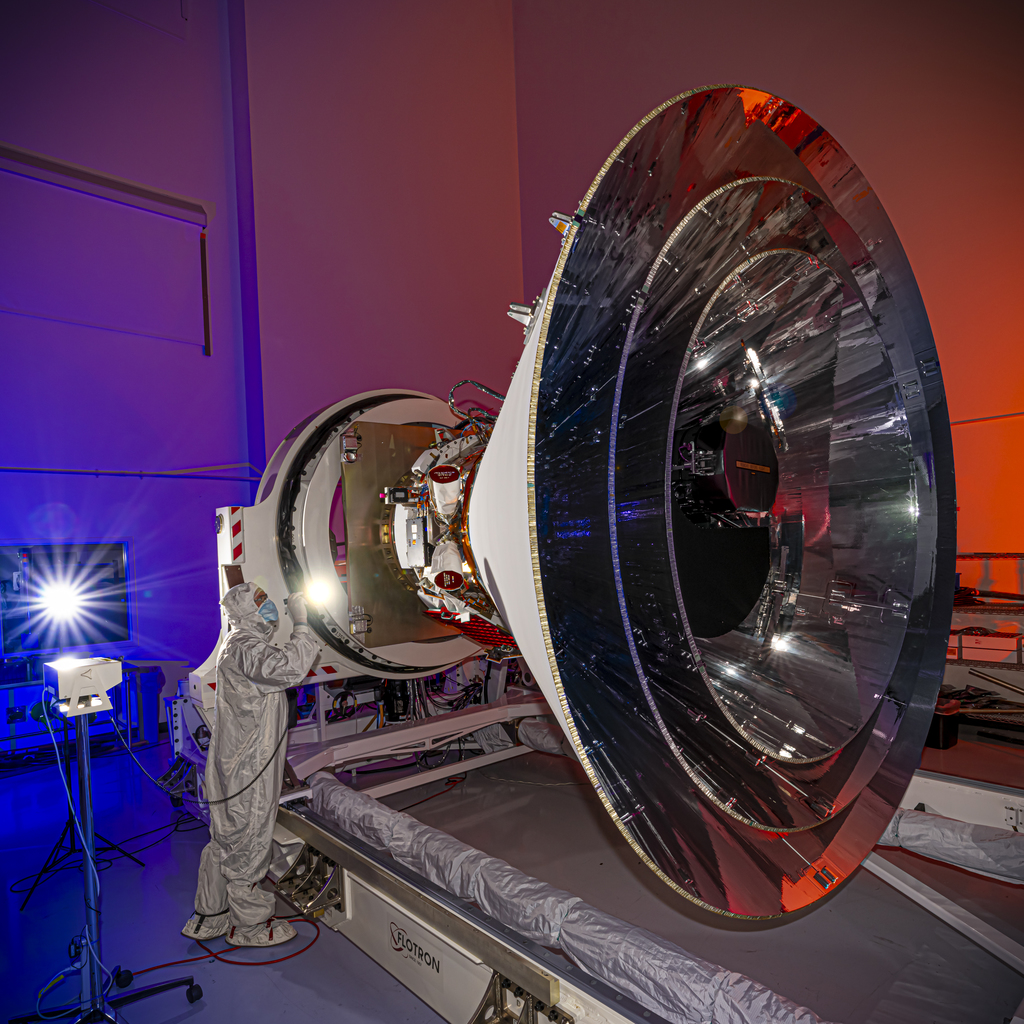SPHEREx Observatory Assembled

This picture shows the SPHEREx observatory in a horizontal position, allowing us to see all three layers of photon shields as well as the telescope. This configuration was used to perform a cover deployment test, as well as a thorough inspection and cleaning of the photon shield edges. In this picture, the telescope soft cover is installed to protect the optics from dust and other foreign objects. The observatory will be transported in this orientation to the anechoic chamber used for EMI/EMC testing in late April, before being moved to a vertical position for the test. These pictures were taken at BAE Systems, in Boulder CO in mid-April 2024. (Image Captured by: BAE Systems, Courtesy NASA/JPL-Caltech.)
Recent News
SPHEREx has made detailed multi-spectral observations of interstellar comet 3I/ATLAS, detecting an abundance of carbon dioxide gas in its coma (the extended gaseous atmosphere of a comet) and water ice in its nucleus. The observations were made between Aug. 7 to Aug. 15, when the object was about 290 million miles (470 million kilometers) from the Sun.
Read MoreNASA’s newest astrophysics space telescope launched in March on a mission to create an all-sky map of the universe. Now settled into low-Earth orbit, SPHEREx (Spectro-Photometer for the History of the Universe, Epoch of Reionization, and Ices Explorer) has begun delivering its sky survey data to a public archive on a weekly basis, allowing anyone to use the data to probe the secrets of the cosmos.
Read MoreBuilding SPHEREx in a Caltech Basement
How a NASA space telescope came together in a university lab
Read MoreAfter weeks of preparation, the space observatory has begun its science mission, taking about 3,600 unique images per day to create a map of the cosmos like no other.
Read MoreNASA’s Newest Space Telescope Recognized at New York Stock Exchange
The SPHEREx astrophysics observatory will help answer big questions about the origins of our universe, of galaxies, and the ingredients for life in our galaxy.
Read More



